You only need two ingredients to make Farmer’s Cheese: milk and vinegar. No fancy equipment necessary! Make this easy fresh cheese recipe breakfast toast with salty olives or sweet jam, snack with Pita Bread, easy appetizer–the list goes on!
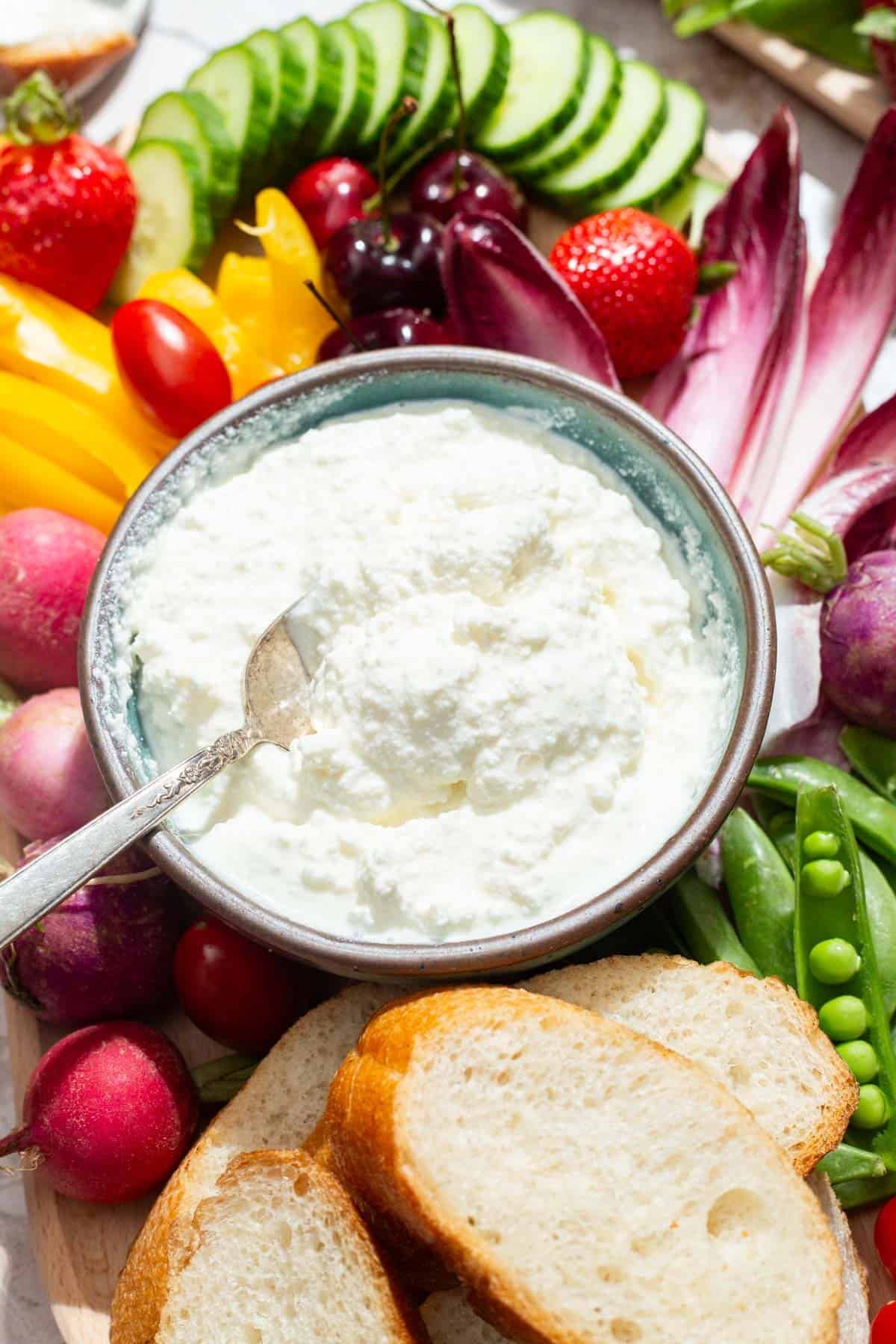
Farmer’s cheese is a mild with a slightly sweet fresh cheese with a slightly tangy flavor. It’s similar to ricotta but the curds are a bit more dense, and you can make it drier or creamier according to your preference.
While you can buy fresh cheeses like ricotta, mozzarella, and and cottage cheese at the store, I haven’t had as much luck finding this beautifully rustic cheese outside of Greece. And there’s nothing quite like the delicate texture of freshly made cheese!
You need no special equipment to make this simple cheese. You stir the milk over medium-low heat until you begin to see many bubbles at the edges of the pot, then you slowly add the vinegar. Curds will immediately float to the top of the liquid (whey). After it cools, you’ll drain it using a cheesecloth and the cheese is ready!
Table of Contents
Food Stories
On my recent trip to Greece, our group spent a day exploring the mountain villages of Crete, the largest of the Greek islands. We stopped in the home of a local shepherd named Andreas at Livadia in the southwestern part of Crete. After touring his field, it was time to milk some goats–yes, I got to milk a goat!–and make farmer’s cheese.
We got to enjoy the freshly made cheese at lunch as part of a big feast that included Grilled Lamb, Greek Salad, potatoes, and platters of fruit. The fresh cheese was served in small bowls with bottles of olive oil and plates of bread.
Andreas made a large batch of cheese to feed our little crowd of 25, but I was able to adapt the recipe for my little family of four using the cow’s milk I buy from my supermarket. I’m thrilled to share it with you!
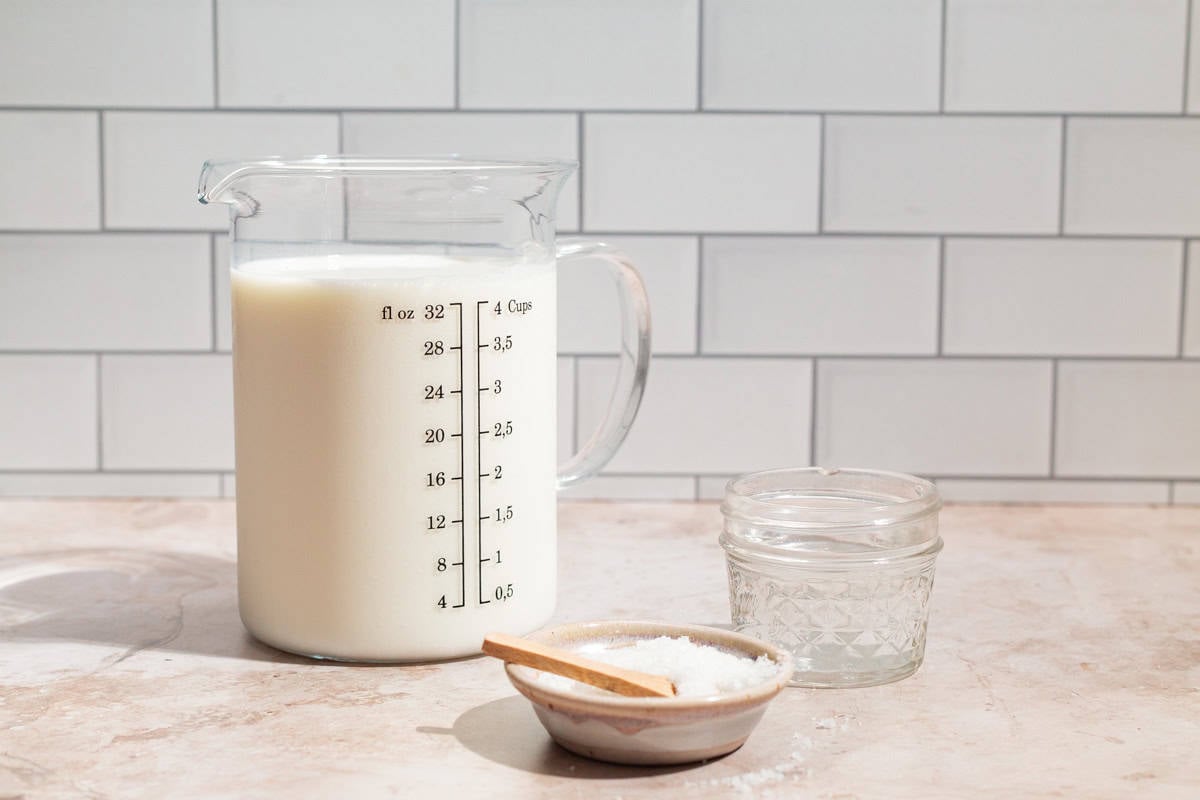
Ingredients to Make Farmer’s Cheese
You only need two ingredients to make fresh cheese:
- Milk: Be sure to use whole milk. The fat not only makes a creamier texture and richer flavor, it also forms a firmer curd so you’ll get a lot more cheese out of the half gallon.
- Vinegar: To make fresh cheese, you’re essentially curdling the milk on purpose. Vinegar is an acid (acetic acid to be exact), which makes the warm milk’s proteins solidify to form curds. I use distilled white vinegar, as it’s mellow enough in flavor to leave the delicate milky taste alone.
- Optional: salt. You can make farmer’s cheese without salt, it just may taste a bit bland. I recommend a touch of kosher salt to enhance the flavor.
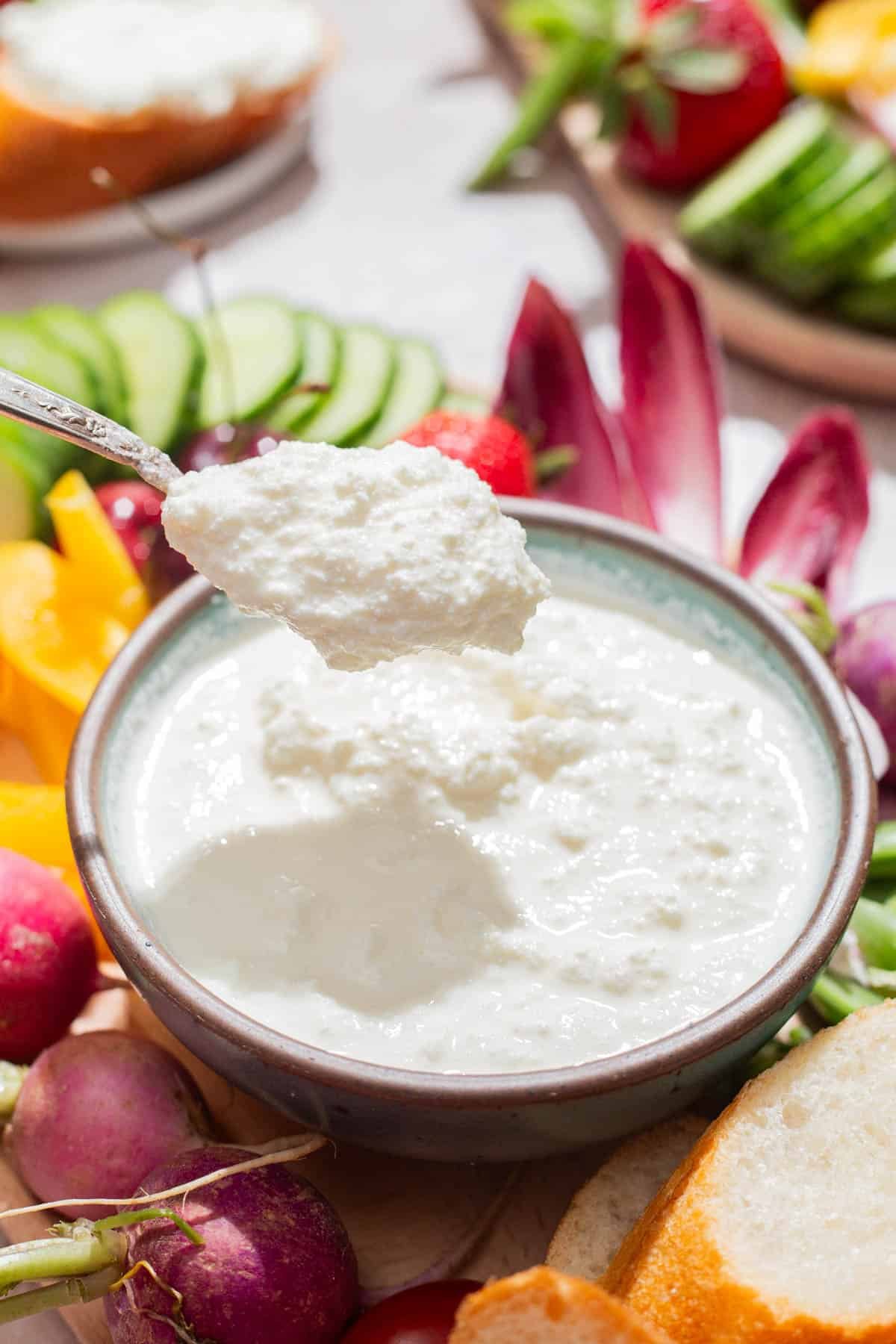
How to Make Farmer’s Cheese
Making cheese may seem like a big undertaking, but fresh cheeses made by curdling whole milk are surprisingly easy.
- Warm the milk. Add 8 cups (1/2 gallon) of whole milk to a large heavy-bottomed pot. Season with salt if you’d like (about 1 teaspoon). Heat over medium-low for about 30 to 40 minutes, stirring occasionally to avoid scorching and never allowing the milk to boil.
- Make the curds. As the milk heats up, you should see steam and small bubbles forming at the edges of the pot. When this happens, begin to slowly pour in the vinegar. Gently stir briefly with a wooden spoon, then wait about one minute before stirring again. The milk should curdle and turn a yellowish lime green color. This is what you are looking for here.
- Cool. Remove from the heat and cool at room temperature, about 1 hour.
- Strain. Line a sieve with a cheesecloth and place it over a large bowl. Pour the cheese mixture into the cheesecloth.
- Form the cheese. Gather the corners of the cheesecloth around the curds, twist, and squeeze to drain excess liquid, which is the whey. For a firmer, dryer cheese, squeeze all the water (whey) out. You can empty the whey and let the cheese rest in the strainer and cheesecloth set over an empty bowl for an hour or more to let it drain further. For a creamier cheese, leave a little bit of the whey moisture in. You can discard the whey or keep it for another use (see “Ways to Use Whey” below).
- Use or store. Transfer the cheese to a glass container with a tight lid. Use immediately or refrigerate, tightly covered, for up to 1 week.
Ways to Mix it Up
This is a simply farmer’s cheese recipe that’s delicious on its own, but you can always jazz it up a bit.
- Make it herby: Fold in finely chopped tender green herbs, like basil, dill, oregano, parsley, tarragon, or a combination.
- Make it sweet: Mix in dried fruits like cranberries or dried figs.
- Make it briney: Salty pickled things, like capers and olives, go well with the creamy mild cheese.
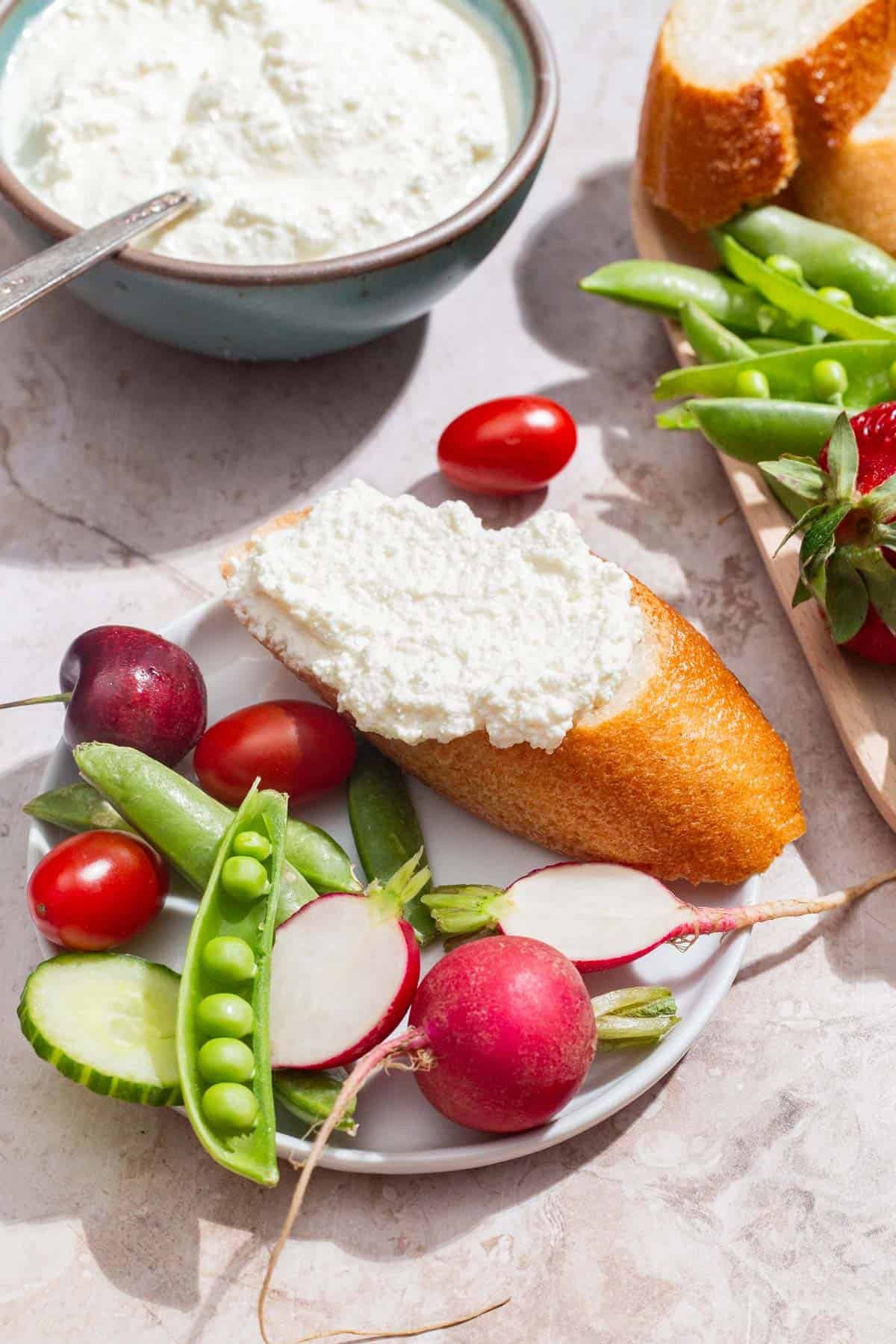
Ways to Use Whey
Whey is the liquid left behind when you skim off the curd. It’s the second best thing about making fresh cheese! It adds a delicious tangy flavor, as well as vitamins, minerals, and about 2 grams of protein per cup (see the USDA for the full breakdown).
This recipe makes an acid whey with salt, so it will add a tangy, slightly salty layer to dishes—use sparingly as the flavor can dominate. Some ideas:
- Baking: Substitute some of the water or milk in baked goods, like bread or Blueberry Muffins.
- Smoothies: Add a small amount of whey to smoothies, like our Minty Green Smoothie.
- In soup: Add in place of some of the broth for depth of flavor.
- To cook veggies: When you reduce whey, it forms a beautiful glaze for cooking vegetables that gives them almost a pickled vibe (you see this in fancy restaurants sometimes). Simply stew small-chopped veggies in whey, stirring often until softened and glazed.
- Cooking grains: Replace a half cup or so of the water when you cook grains, from Farro, Basmati Rice, and beyond.
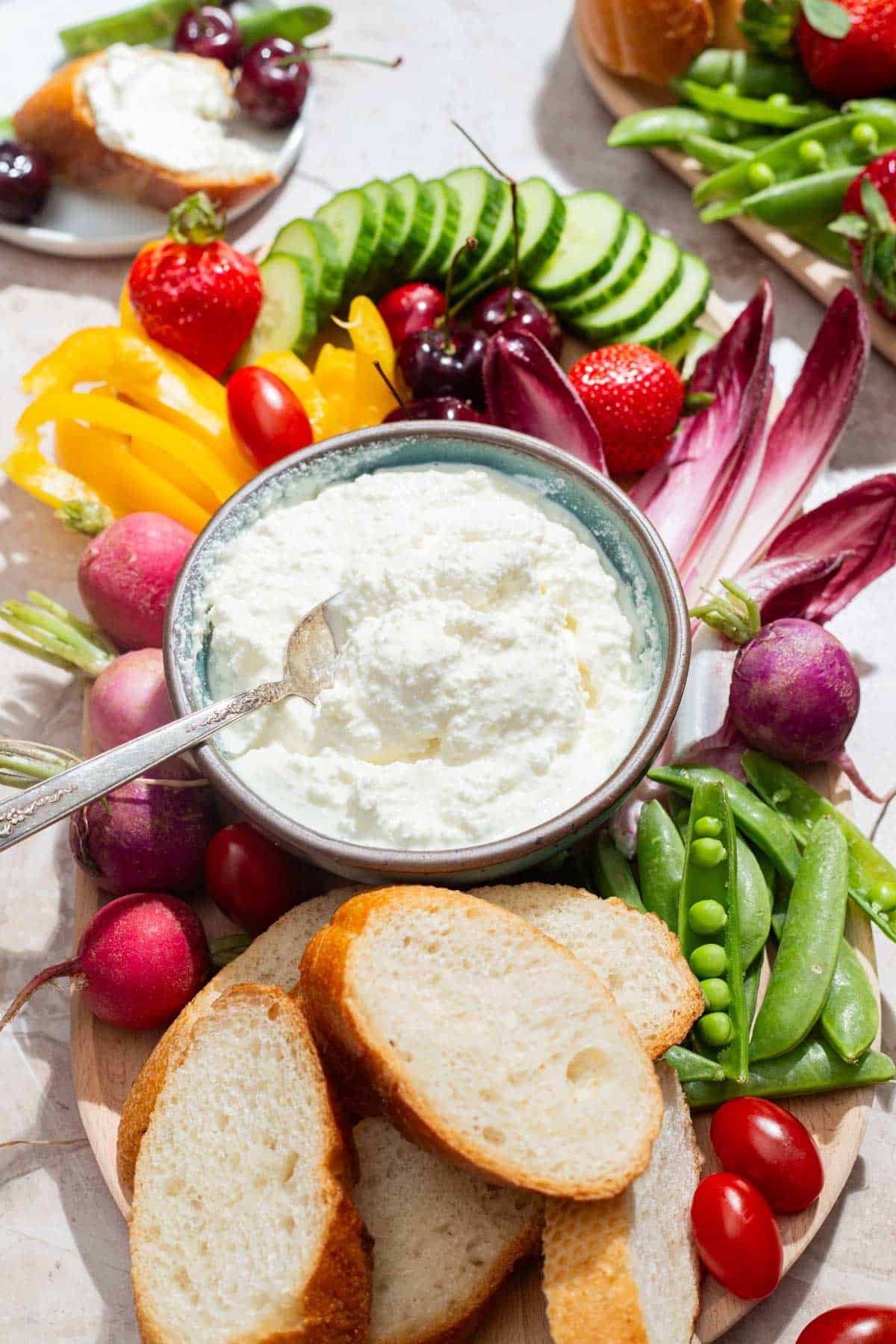
How to Use Farmer’s Cheese
The mildness of farmer’s cheese makes it very versatile, fitting in well with both savory and sweet. Some ideas:
- With bread, flatbread, breadsticks–you really can’t go wrong.
- Use as a dip for Crudité, Pita Chips, or part of an Antipasto Platter.
- Crumbled on top of salads.
- Enjoy with a drizzle of honey or along with fresh fruit.
More Creamy-Dreamy Dips and Spreads
Dips and Condiments
Homemade Labneh
Middle Eastern
Tahini Sauce Recipe-How to Make Tahini Sauce (Video)
Appetizer and Mezze
Spinach Greek Yogurt Dip Recipe with Walnuts
Dips and Condiments
Cranberry and Herb Labneh Recipe with Homemade Pita Chips
Browse all Mediterranean recipes
Visit Our Shop
Homemade Farmer’s Cheese
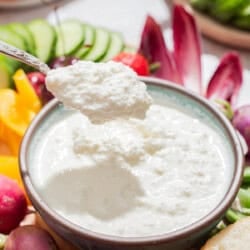
Ingredients
- 8 cups (1/2 gallon) whole milk
- 1 teaspoon kosher salt (optional)
- 5 tablespoons distilled white vinegar
Instructions
- Warm the milk. Add the milk and salt (if using) to a large heavy-bottomed pot. Heat over medium-low for about 30 to 40 minutes, stirring occasionally to avoid scorching and never allowing the milk to boil.
- Make the curds. As the milk heats up, you should see steam and tiny bubbles forming at the edges of the pot. When this happens, begin to slowly pour in the vinegar. Gently stir briefly with a wooden spoon, then wait about one minute before stirring again. The milk should curdle and turn a yellowish color.
- Cool. Remove from the heat and cool at room temperature, about 30 minutes to 1 hour.
- Form the cheese. Line a sieve with a cheesecloth and place it over a large bowl. Pour the cheese mixture into the cheesecloth, then gather the cheesecloth around the curds and squeeze to drain excess water (the water/whey should run clear at some point). For a crumbly cheese, squeeze all the water (whey) out. For a creamier cheese, leave a little bit of the whey moisture in. You can discard the whey or keep it for another use (see notes).
- Use or store. Transfer the cheese to a glass container with a tight lid. Use immediately or refrigerate, tightly covered, for up to 1 week.
Notes
- Visit our shop to browse quality Mediterranean ingredients including olive oils, honey, jams, and spices.
- No cheesecloth? Line a fine mesh strainer with a large coffee filter, thin clean tea towel, or paper towels.
-
This recipe makes an acid whey with salt, so it will add a tangy, slightly salty layer to dishes—use sparingly as the flavor can dominate. Some ideas:
- Baking: Substitute some of the water or milk in baked goods, like bread or Blueberry Muffins.
- Smoothies: Add a small amount of whey to smoothies, like our Minty Green Smoothie.
- In soup: Add in place of some of the broth for depth of flavor.
- To cook veggies: When you reduce whey, it forms a beautiful glaze for cooking vegetables that gives them almost a pickled vibe (you see this in fancy restaurants sometimes). Simply stew small-chopped veggies in whey, stirring often until softened and glazed.
- Cooking grains: Replace a half cup or so of the water when you cook grains, from Farro, Basmati Rice, and beyond.
Nutrition
Mediterranean Diet Starter Kit
Stock your pantry with the essentials to eat the Mediterranean way, including Greek olive oil, 7 spices, and tahini.
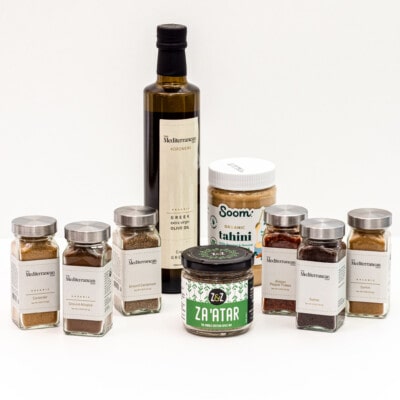

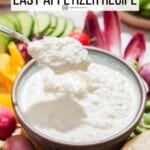
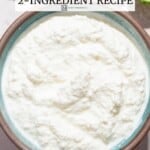
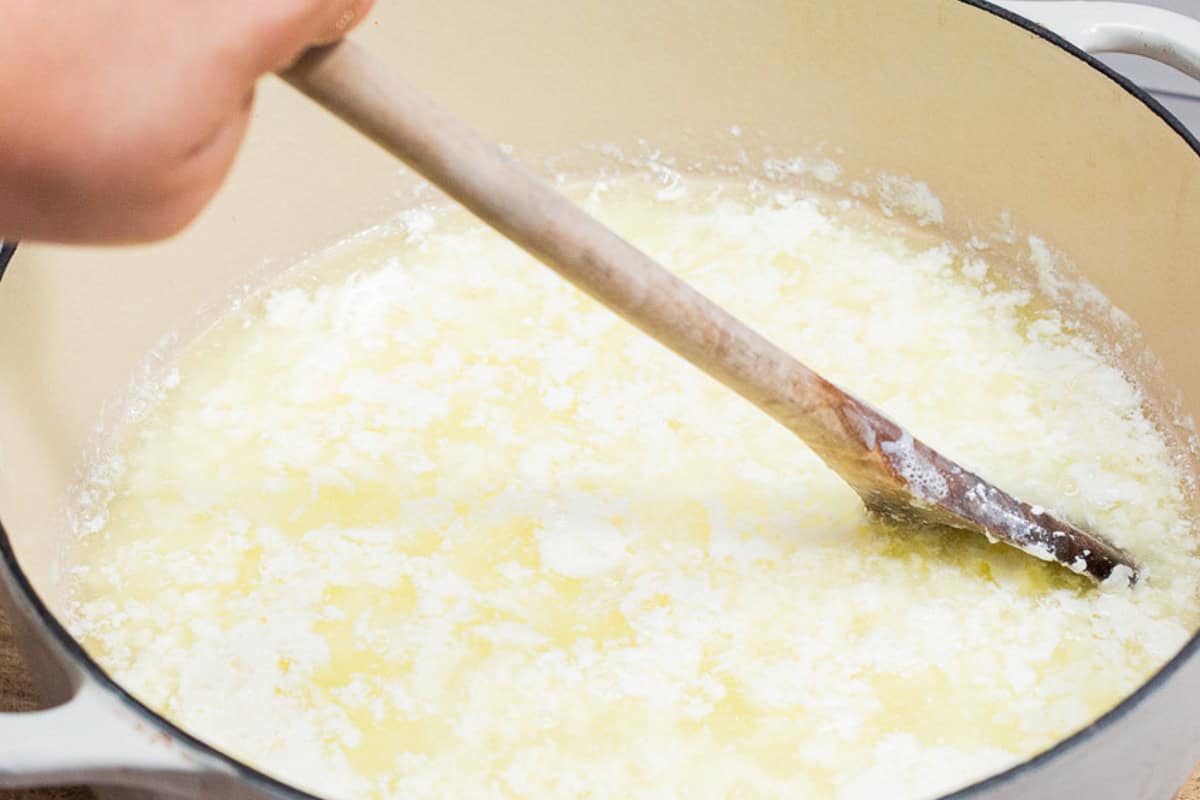
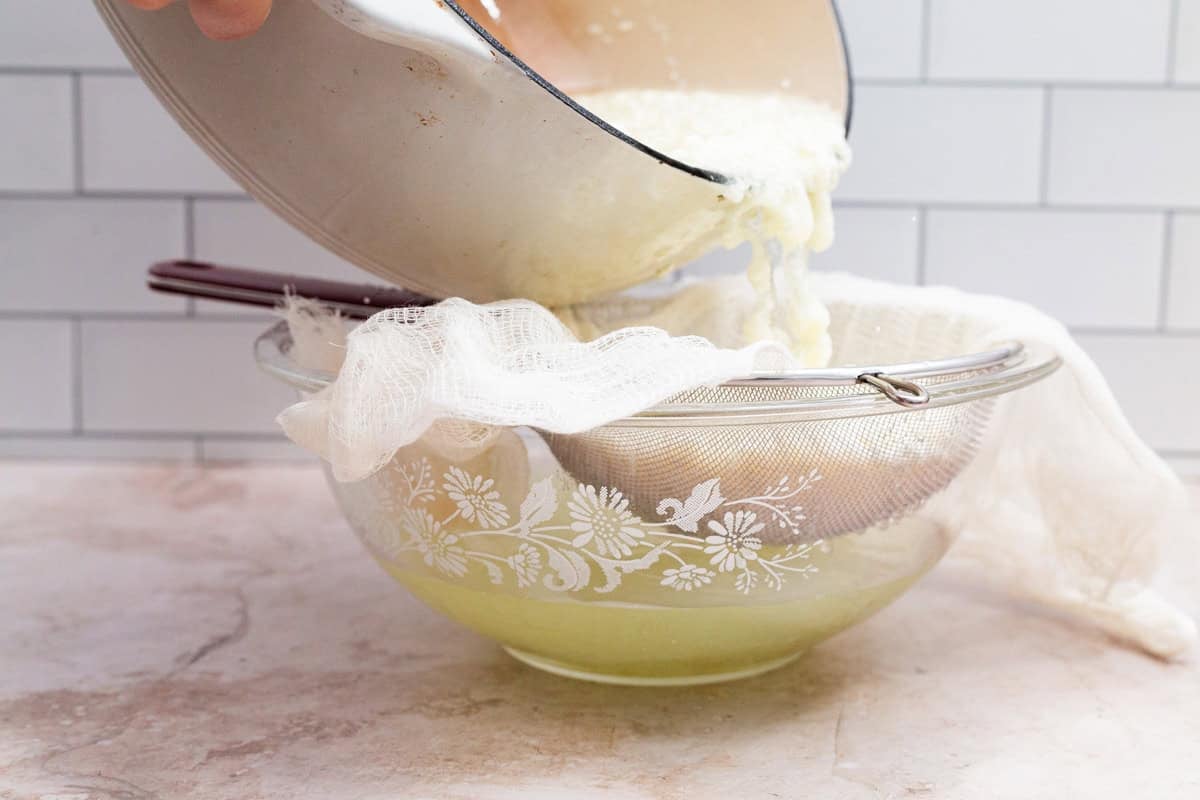
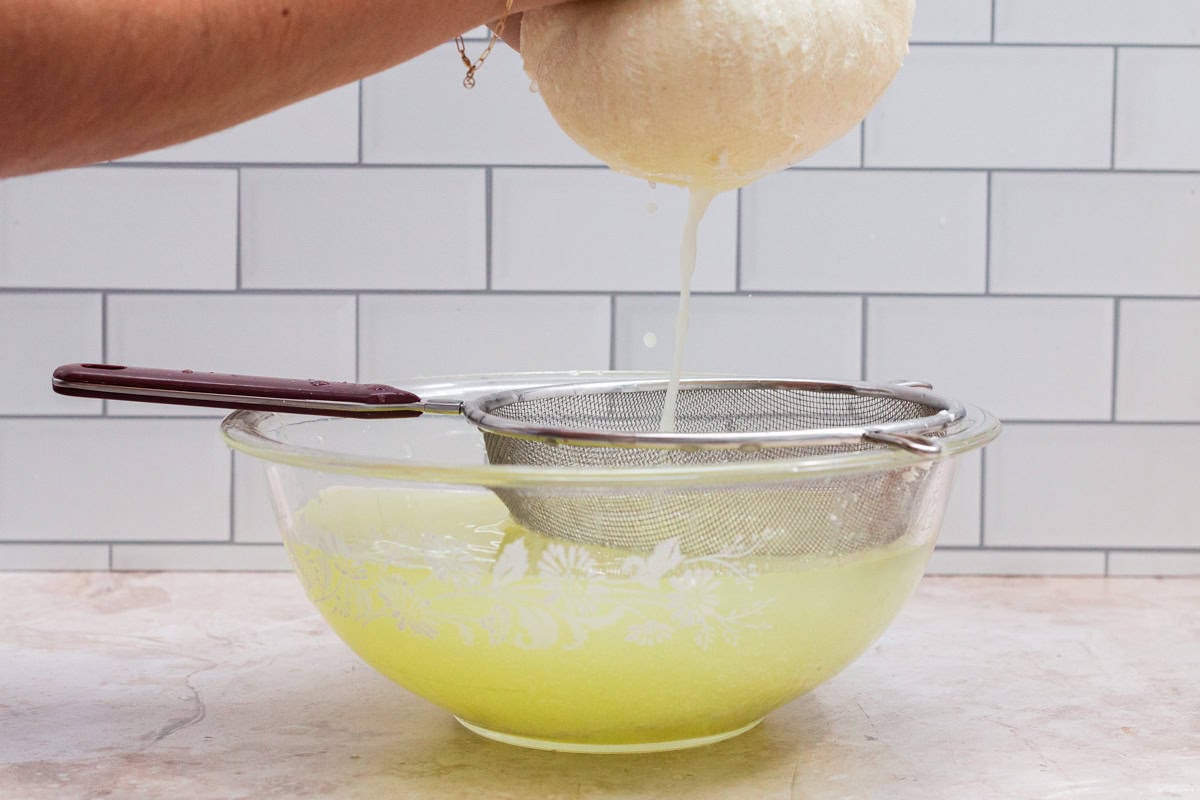
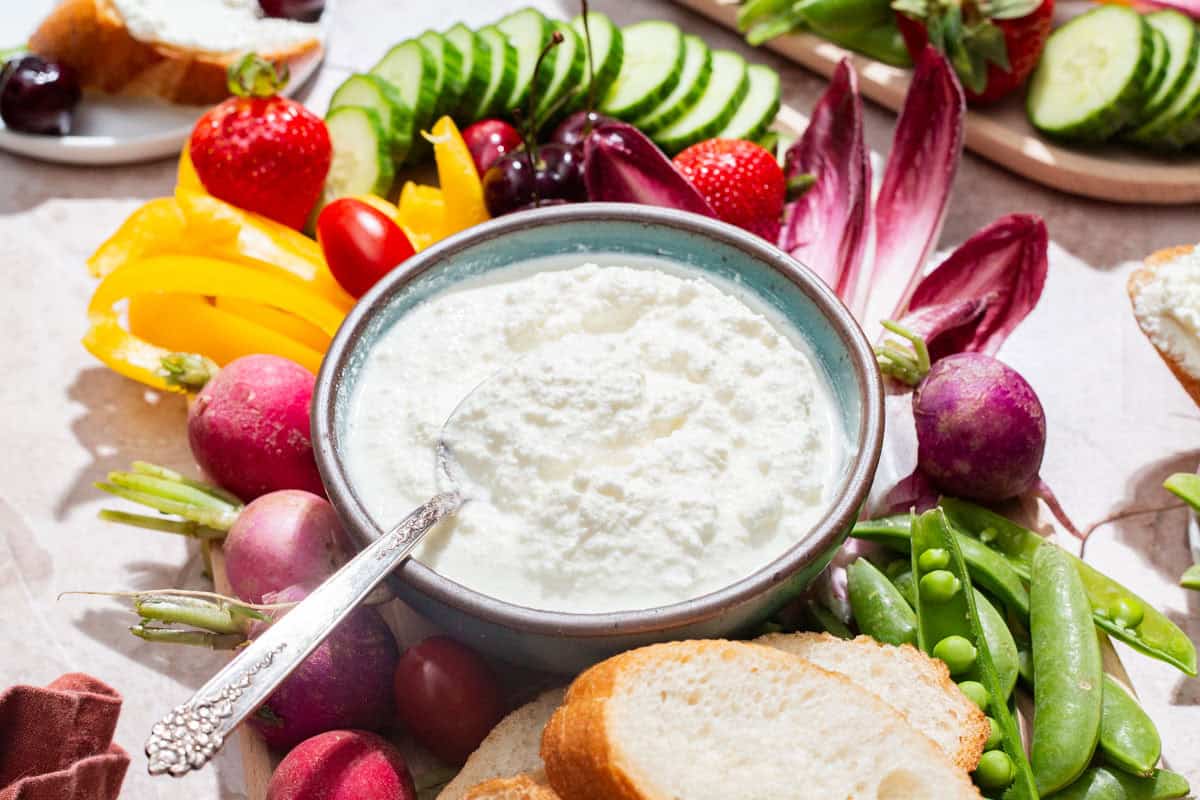
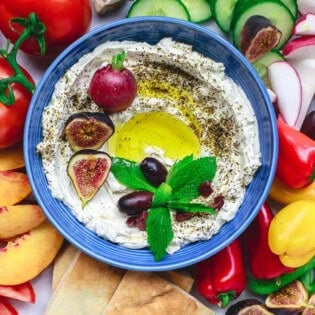
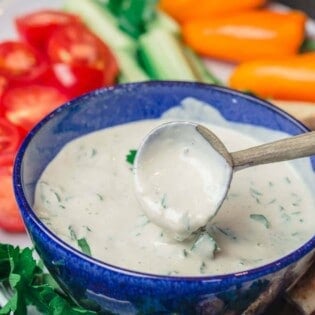
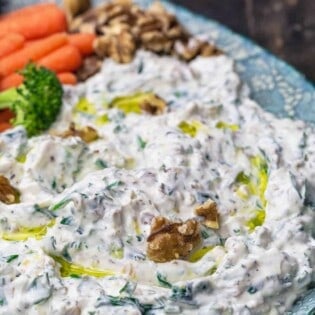

This recipe isnt for a traditional farmers cheese, it shuld be runny but rather more of a firm texture. I grew up with mom making the cheese all my life. I wouldnt recommend it.
For a better cheese, use curds instead of vinegar to make the sheese. The curds so formed are thicker and have a better taste. Acetic acid is not organic. Curds are btter. A spoonful of sour curd and you will gave a better cheese.
Can this cheese be used instead of ricotta cheese in dishes like lasagna or bread?
Hi, Joan. Yes! You should be able to use farmer’s cheese in place of ricotta in a pinch, as long as it’s not a recipe that requires a silky texture.
What is the weight of the finished cheese?
We don’t have that measurement, Amira. I’m so sorry.
I am very mulch enjoying your recipes. Keepthem coming!
Will do!
This is very similar to the process of making paneer, with the exception that no salt is used when making paneer.
When making paneer either lemon or vinegar can be used. Is that also the case with this farmer’s cheese?
Hi, Rowen! It is! Lemon works with this recipe, as well. Hope you give it a try!
There is no mention of how much cheese = 37.1 Kcals. Is it a tablespoon or a certain weight?
I’ve made the cheese successfully a few times. A friend wants to know if there is a way to make it low calorie but I know using whole milk is the best. I would like to tell her the calorie count for the whole milk variety but I don’t know how much = 37.1 Kcals.
Hi, Elaine. For this recipe, the nutritional information listed is per Tablespoon.